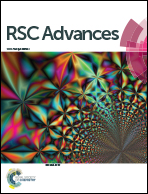MgO whiskers reinforced poly(vinylidene fluoride) scaffolds
Abstract
In this study, poly(vinylidene fluoride) (PVDF) scaffolds with MgO whiskers were prepared through selective laser sintering, and their properties were studied in terms of mechanical and biological properties. The results indicated that the tensile strength and elastic modulus of the scaffolds were increased by 52.53% and 29.31% respectively when the MgO whiskers content was 2 wt%. The enhancement mechanisms were that MgO whiskers improved the crystallinity by providing nucleating sites for the crystallization of PVDF, absorbed and transferred energy during crack extension via the good interfacial adhesion, and transformed the fracture mode from crazing-tearing/brittle mode to fibrillation/ductile mode. In addition, MG-63 cell culture experiments indicated that better attachment and proliferation, and higher alkaline phosphatase (ALP) activity, were obtained in the case of the PVDF scaffolds with MgO whiskers compared to in the PVDF scaffolds without MgO whiskers.


 Please wait while we load your content...
Please wait while we load your content...